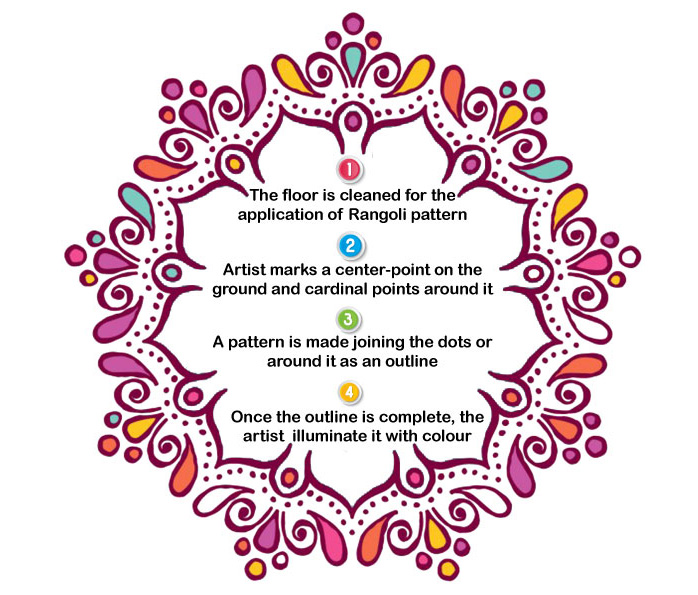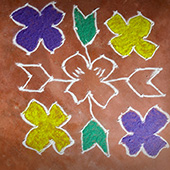.
Rangoli is an art of the moment, like sand art and street paintings. Traditionally, rangolis were made as per set proportions and geometric calculations, later changing over time with new themes and variations. Though originally done in two feet square spaces, now it takes form in any preferred sizes, from that of a doormat to the size of an entire room. The very few steps in their making process include deciding on a floor area and cleaning it thoroughly before starting with the making. Then marking the center point and cardinal points around it, the artist draws outlines for the intended pattern with chalk or directly with the white powder. Once the outlines are done and the dots are joined, the artist fills in the spaces with colours. It is a strong belief in the Indian culture that it has to be completed in an unbroken pattern, with no gaps left in the outline so that it stops bad spirits from entering the household. Conventionally these patterns were created only on auspicious days or festivals but today, they can be widely found at entrances to party spaces, wedding halls, hotel foyers, and even at opening ceremonies and corporate functions gracing the occasion. It can be performed irrespective of one’s gender and can be easily learned from family, friends, or previous generations.
Flowchart:









